 In the bustling streets of Verona, a tale of forbidden love unfolds between Romeo and Juliet, two young souls from feuding families. Their passionate and clandestine romance defies the entrenched animosities of the Montagues and Capulets. As they navigate the treacherous waters of secrecy, loyalty, and societal expectations, the couple dreams of a world free from the chains of ancient grudges. However, the weight of their families’ enmity and a series of fateful misunderstandings lead them down a tragic path, culminating in a heart-wrenching finale. Their story serves as a poignant reminder of the destructive power of prejudice and the redemptive potential of love.
In the bustling streets of Verona, a tale of forbidden love unfolds between Romeo and Juliet, two young souls from feuding families. Their passionate and clandestine romance defies the entrenched animosities of the Montagues and Capulets. As they navigate the treacherous waters of secrecy, loyalty, and societal expectations, the couple dreams of a world free from the chains of ancient grudges. However, the weight of their families’ enmity and a series of fateful misunderstandings lead them down a tragic path, culminating in a heart-wrenching finale. Their story serves as a poignant reminder of the destructive power of prejudice and the redemptive potential of love.
Basic info about the play
- Title of the Play: Romeo and Juliet
- Author: William Shakespeare
- Date of Publication: 1597 (First Quarto)
- Original Language: English
- Genre: Tragedy
- Form and Structure: Five-act play
- Setting: Verona, Italy, during the Renaissance
- Themes: Love, fate, family feuds, youth, tragedy, societal constraints
- Publication Medium: Originally published as a quarto (a small booklet), later included in various collections of Shakespeare’s works.
Romeo and Juliet in a Nutshell: A One-Sentence Summary
Amidst the bitter feuds of Verona, young Romeo and Juliet’s forbidden romance blossoms, leading to profound consequences that transcend their families’ age-old animosities.
An Act-by-Act Summary of Romeo and Juliet
Act I: Feuds and First Glances
In the bustling streets of Verona, a brawl breaks out between the feuding Montague and Capulet families, leading to a decree from Prince Escalus: further breach of the peace will be punished by death. Amidst this tension, Romeo Montague is despondent over his unrequited love for Rosaline. However, his melancholy is soon forgotten when he and his friends decide to crash the Capulet’s ball. At the ball, Romeo’s eyes meet Juliet’s, the daughter of the Capulets, and they are instantly smitten, unaware of each other’s family ties.
Act II: Secret Vows
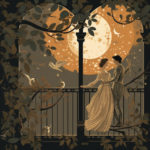 Dubbed the “Balcony Scene,” Romeo sneaks into the Capulet orchard and overhears Juliet confess her love for him. They exchange vows of love, and with the help of Friar Laurence, who hopes their union will mend the rift between their families, they secretly marry the next day.
Dubbed the “Balcony Scene,” Romeo sneaks into the Capulet orchard and overhears Juliet confess her love for him. They exchange vows of love, and with the help of Friar Laurence, who hopes their union will mend the rift between their families, they secretly marry the next day.
Act III: Bloodshed and Banishment
Tybalt, Juliet’s fiery cousin, challenges Romeo to a duel. Romeo, now secretly related to Tybalt through marriage, refuses. However, Mercutio, Romeo’s close friend, accepts the challenge and is fatally wounded by Tybalt. In a fit of rage, Romeo avenges Mercutio’s death by killing Tybalt and is subsequently banished from Verona. Meanwhile, Juliet awaits her wedding night, only to be devastated by the news of Tybalt’s death and Romeo’s banishment.
Act IV: Desperate Measures
 As Juliet’s parents arrange her marriage to Paris, she seeks a way out of this predicament. Friar Laurence devises a plan: Juliet will take a potion that simulates death. Believing she’s dead, her family will bury her, and Romeo will rescue her from the tomb. She drinks the potion, and her family, thinking she has died, lays her in the Capulet tomb.
As Juliet’s parents arrange her marriage to Paris, she seeks a way out of this predicament. Friar Laurence devises a plan: Juliet will take a potion that simulates death. Believing she’s dead, her family will bury her, and Romeo will rescue her from the tomb. She drinks the potion, and her family, thinking she has died, lays her in the Capulet tomb.
Act V: Tragic Reunion
Unaware of the Friar’s plan, a heartbroken Romeo returns to Verona upon hearing of Juliet’s “death.” He encounters Paris at Juliet’s tomb, and they duel, ending in Paris’s death. Romeo, believing Juliet to be truly dead, drinks poison and dies beside her. Juliet awakens, finds Romeo dead, and kills herself with his dagger. Their tragic deaths finally reconcile the feuding families.
Main Characters Overview
Romeo Montague: Love-Struck Youth
The young heir of the Montague family, Romeo is impulsive, passionate, and often melancholic. Initially infatuated with Rosaline, he quickly falls deeply in love with Juliet. His intense emotions, both of love and of rage, drive much of the play’s action. His love for Juliet and his tragic fate make him one of the most enduring characters in literature.
Juliet Capulet: Innocence and Resolve
A mere 13 years old, Juliet matures rapidly over the course of the play. From an obedient daughter, she transforms into a determined woman, willing to defy societal norms and her family for love. Her innocence, combined with her strength of character, makes her love for Romeo all the more poignant.
Friar Laurence: Well-Intentioned Meddler
A Franciscan friar and Romeo’s confidant, Friar Laurence is a well-meaning individual who believes that Romeo and Juliet’s union might reconcile their feuding families. He marries them in secret and concocts the plan involving the sleeping potion. His intentions are noble, but his actions inadvertently contribute to the play’s tragic conclusion.
Mercutio: Wit and Whimsy
Romeo’s close friend and a kinsman to Prince Escalus, Mercutio is lively, quick-witted, and often mocks Romeo’s romantic inclinations. His Queen Mab speech is one of the play’s most famous passages. His untimely death at the hands of Tybalt marks the play’s turn from comedy to tragedy.
Tybalt Capulet: Fiery Antagonist
Juliet’s cousin, known as the “Prince of Cats,” Tybalt has a quick temper and is always ready to draw his sword. His aggressive nature and hatred for the Montagues lead to the pivotal duel with Romeo and Mercutio, setting the tragic events of the play into motion.
Nurse: Juliet’s Confidante
Juliet’s loyal nursemaid and confidante, the Nurse provides comic relief with her bawdy humor. She genuinely cares for Juliet and acts as a messenger between Romeo and Juliet, aiding their secret rendezvous. However, her pragmatic views on love contrast sharply with Juliet’s romantic ideals.
Lord and Lady Capulet: Traditionalists
Juliet’s parents, they represent the older generation’s adherence to tradition and societal norms. Lord Capulet initially appears as a considerate father but later demands Juliet’s obedience in marrying Paris. Lady Capulet, though distant, is devastated by the events that befall her daughter.
Lord and Lady Montague: Concerned Parents
Romeo’s parents are less prominently featured than the Capulets but are depicted as concerned for their son, especially in light of his early melancholy.
Paris: The Unwitting Suitor
A kinsman to Prince Escalus and Juliet’s suitor, Paris is the epitome of a suitable husband by societal standards. He’s polite and noble but ultimately becomes an unwitting victim of the tragic sequence of events.
Historical Backdrop: Shakespeare’s Inspiration for “Romeo and Juliet”
“Romeo and Juliet” was penned during the Elizabethan era, a time of great transformation in England. The Renaissance was in full bloom, bringing with it a renewed interest in the arts, sciences, and the classics. Shakespeare, like many of his contemporaries, was influenced by these societal shifts. The play draws from various earlier versions of the Romeo and Juliet tale, including works by Arthur Brooke and William Painter. However, Shakespeare’s genius lay in his ability to transform these tales into a narrative rich with poetic brilliance and profound themes.
Moreover, the Elizabethan worldview was deeply rooted in the belief in fate and the influence of the stars on human lives, which is echoed in the play’s frequent references to destiny. The societal norms of the time, especially concerning family honor and the role of women, also play a significant role in the narrative. Juliet’s struggle against her family’s expectations and the tragic consequences of the feud between the Montagues and Capulets can be seen as a reflection of the tensions and rigid structures of Shakespeare’s society.
Evolving Perspectives: The Reception and Critique of “Romeo and Juliet”
When “Romeo and Juliet” first graced the Elizabethan stage, it was met with a favorable reception, resonating with audiences due to its passionate portrayal of young love and its tragic consequences. The play’s intricate blend of humor, romance, and tragedy was well-suited to the diverse tastes of Elizabethan theatergoers. Over time, its popularity grew, and it became one of Shakespeare’s most frequently performed plays.
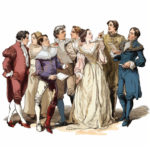 In the centuries that followed, critical perceptions of “Romeo and Juliet” evolved. During the 18th century, some critics, influenced by the era’s neoclassical tastes, found fault with the play’s structure and the supposed irrationality of its protagonists. However, the Romantic era that followed saw a renewed appreciation for the play’s emotional depth and its exploration of youthful passion. Figures like Samuel Taylor Coleridge praised the play for its poetic brilliance and psychological insight.
In the centuries that followed, critical perceptions of “Romeo and Juliet” evolved. During the 18th century, some critics, influenced by the era’s neoclassical tastes, found fault with the play’s structure and the supposed irrationality of its protagonists. However, the Romantic era that followed saw a renewed appreciation for the play’s emotional depth and its exploration of youthful passion. Figures like Samuel Taylor Coleridge praised the play for its poetic brilliance and psychological insight.
In the modern era, “Romeo and Juliet” has been analyzed through various lenses, from feminist critiques focusing on Juliet’s agency and the societal constraints she faces, to examinations of the play’s commentary on generational conflict. The play’s enduring appeal lies in its universal themes and its ability to inspire diverse interpretations, ensuring its continued relevance and admiration in the world of literature and beyond.
“Romeo and Juliet” Reimagined: Adaptations Across Media
“Romeo and Juliet” has transcended its original form to inspire a myriad of adaptations across various media. Its timeless tale of love, tragedy, and fate has been reinterpreted and retold in countless ways, reflecting its universal appeal. Here are some notable adaptations:
Film:
- “Romeo + Juliet” (1996): Directed by Baz Luhrmann, this modern adaptation sets the classic tale in the contemporary setting of Verona Beach, with Leonardo DiCaprio and Claire Danes in the titular roles.
- “West Side Story” (1961): A musical adaptation that transposes the story to the streets of 1950s New York, focusing on the rivalry between two gangs and the love story between Tony and Maria.
Theatre:
- “Romeo and Juliet: A Rock ‘n’ Roll Love Story”: A musical version that infuses the narrative with rock music.
- “Such Tweet Sorrow” (2010): A unique adaptation by the Royal Shakespeare Company that played out the story in real-time over five weeks on Twitter.
Ballet:
- “Romeo and Juliet” by Sergei Prokofiev: One of the most famous ballet adaptations, it has been performed by numerous ballet companies worldwide.
Literature:
- “Juliet” by Anne Fortier: A novel that alternates between the narrative of a modern woman and the story of the “real” Juliet and her Romeo in 14th-century Siena.
- “Prince of Shadows” by Rachel Caine: A retelling of the classic story from the perspective of Benvolio, Romeo’s cousin.
Music:
- “Romeo and Juliet” by Dire Straits: A song that captures the essence of the tragic love story.
- “Love Story” by Taylor Swift: A song that draws inspiration from the play, but with a more optimistic twist.
These adaptations, among countless others, showcase the enduring influence and versatility of “Romeo and Juliet,” proving its ability to inspire and captivate audiences across different cultures and eras.
Comparative Insights: “Romeo and Juliet” Within Shakespeare’s Canon and the Elizabethan Age
“Romeo and Juliet” stands distinct in Shakespeare’s repertoire, focusing on the fervor of young love amidst societal conflict. While it shares thematic elements with other tragedies like “Othello” and “Macbeth”- exploring human passions and their consequences – it uniquely intertwines these with the innocence and impulsiveness of youth. The play also balances its tragic narrative with comedic elements, reminiscent of Shakespeare’s lighter works such as “A Midsummer Night’s Dream.”
Set against the backdrop of the Elizabethan era, with its emphasis on fate and astrological beliefs, the play resonates with the age’s struggles between individual desires and societal expectations.
Fascinating Tidbits of “Romeo and Juliet”
- Name Origins: The names Romeo and Juliet weren’t Shakespeare’s invention. They trace back to earlier Italian tales, but Shakespeare’s rendition is undoubtedly the most famous.
- First Words and Lasting Impact: Juliet’s first words in the play are a question about marriage, foreshadowing the central theme of the narrative. Her character, despite being only 13, has become an enduring symbol of romantic love.
- Queen Mab’s Debut: Mercutio’s speech about Queen Mab, the fairy who influences dreams, is one of the first literary mentions of this mythical character, who later appears in other works and cultures.
- A Play of Firsts: “Romeo and Juliet” is believed to be one of the first plays to use the technique of dramatic irony extensively, where the audience knows more than the characters, heightening the tension and tragedy.
- Lost in Translation: The famous line “Wherefore art thou Romeo?” is often misinterpreted. “Wherefore” means “why” in Elizabethan English, so Juliet is lamenting the complications of Romeo’s identity, not wondering about his location.
These lesser-known facts add layers to the rich tapestry of “Romeo and Juliet,” showcasing the depth and intricacies of Shakespeare’s genius.
My Own Reflection on “Romeo and Juliet”
Romeo and Juliet: Shakespeare’s most overrated tale of teenage angst and impulsivity. Two kids, barely out of puberty, making life-altering decisions based on a few stolen glances? It’s less a timeless love story and more a cautionary tale about the dangers of not supervising hormonal teenagers. Perhaps if they’d had social media, they’d have just subtweeted each other and moved on.
🌹 Agree? Disagree? Think Shakespeare was the original drama king or just a 16th-century soap opera writer? We adore your brilliant minds! 💡 Share your genius insights in the comments below and let’s revel in the beauty of diverse opinions! 🎭✨

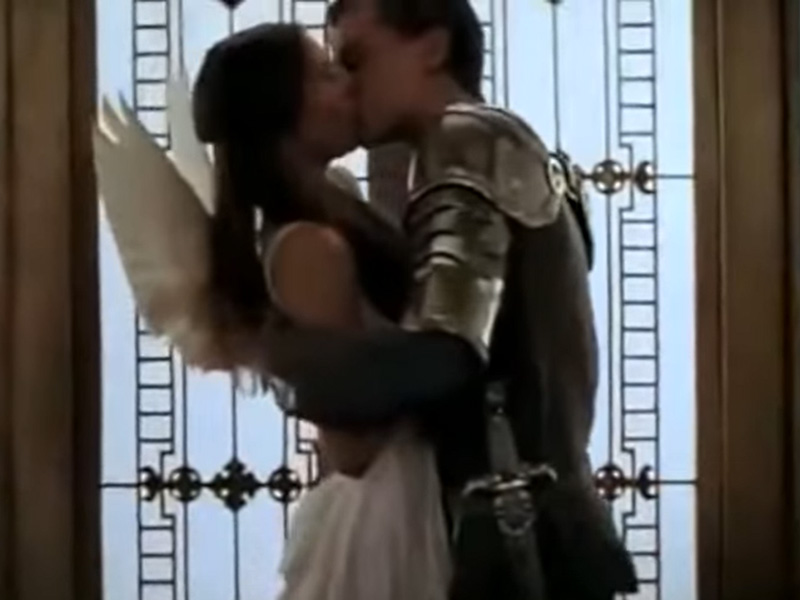
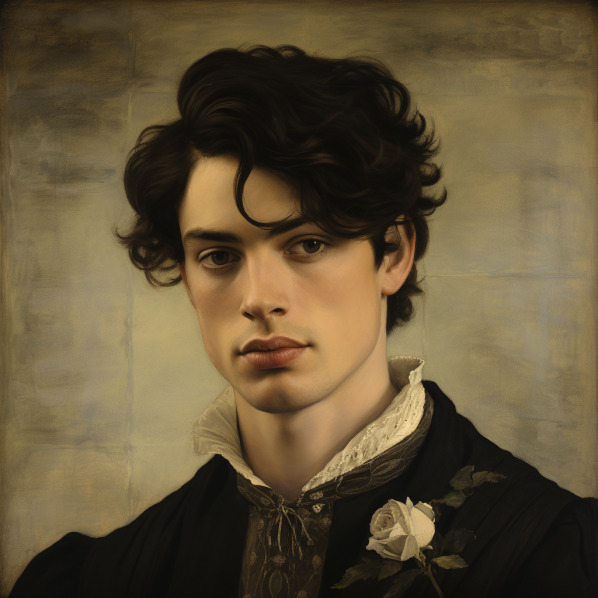




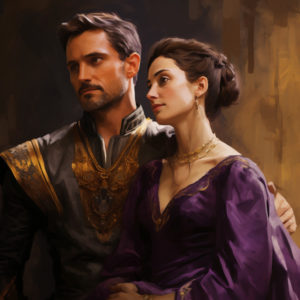
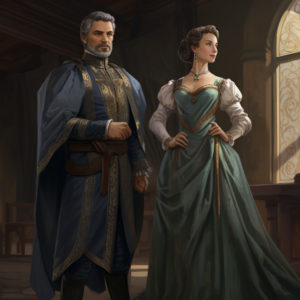
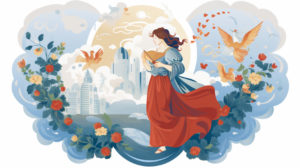
Comments